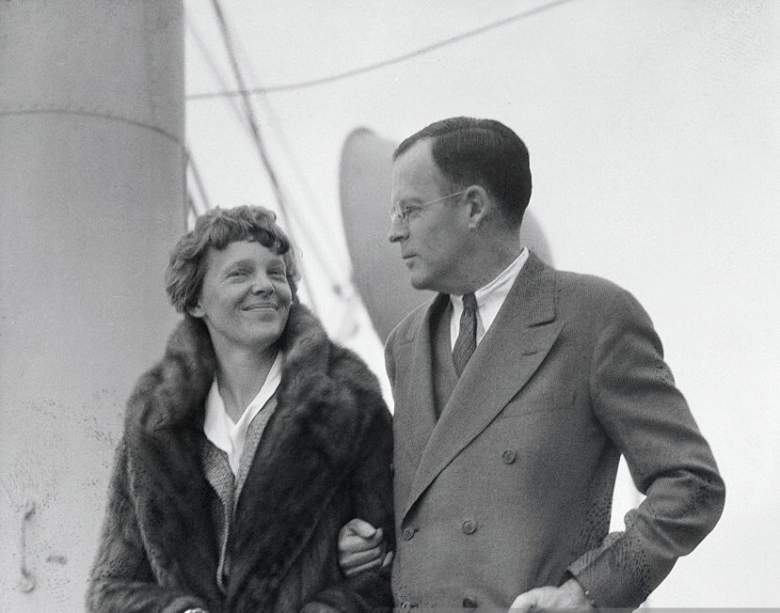
Getty Images George P. Putnam & Amelia Earhart
Amelia Earhart is known for being a pioneer in the field of aviation and the first female pilot to fly across the Atlantic in a solo flight. In addition to being a historic feminist icon, she is known for her tragic and mysterious death when the plane she was flying disappeared somewhere over the Pacific in 1937.
Earhart was married to George P. Putnam, an American publisher, entrepreneur, author and promoter in 1931. Putnam pursued Earhart for several years before she finally accepted his proposal. Earhart and Putnam remained happily married until her death at age 39; enjoying a rather unconventional marriage.
Here’s what you need to know.
1. Putnam Was Born Into a Powerful, Prominent Family Well Established in The Publishing Industry, But Worked to Achieve His Own Success

WikimediaAmelia Earhart & George Putnam
George P. Putnam was born in Rye, New York in 1887. His grandfather, George Palmer Putnam, was an early titan of the publishing industry. His company would eventually become the massive firm of G. P. Putnam’s Sons. Raised in a privileged household, Palmer went on to study at Harvard and the University of California, as Purdue reports.
Following his graduation, Putnam established himself as the publisher and editor of a small newspaper in Bend, Oregon, unrelated to his family’s publishing business. Well-liked and respected by the community, he became the mayor of Bend in 1912. Putnam later took a job working directly for the mayor of Oregon before returning to the East Coast and joining the family publishing business.
Putnam enlisted in the U.S. Army in World War I. After the completion of his service, in 1926, the American Museum of Natural History sponsored an expedition to the Arctic led by Putnam. He would later lead another expedition to collect wildlife specimens. Following his adventures in the Arctic, he returned to New York to continue building his career.
2. Putnam Was Previously Married to Dorothy Binney, The Daughter of The Inventor of Crayola Crayons

WikimediaAmelia Earhart & George Putnam
Putnam was popular among New York’s young socialites. In 1911, he married Dorothy Binney, the daughter of Edwin Binney, who was one of the inventors of Crayola Crayons. Putnam and Binney had two sons together and raised them in the Rye area.
Binney became involved in an extramarital affair with a man named George Weymouth after traveling to South America. Weymouth was 19 years younger than Binney, and news of their affair made its way back to Putnam. Putnam and Binney had been living separately at this time because Putnam had begun working as a promoter, and had been working closely with Charles Lindbergh and publishing his autobiography, which was a massive success.
Putnam would eventually file for divorce from Binney. Contrary to popular belief, he did not leave Binney for Earhart; it was reportedly Binney’s affair with Weymouth that was the catalyst for their divorce. While Putnam did indeed meet Earhart while he was still married to Binney, according to reports, their marriage had completely collapsed by that point. More information about Binney’s affair can be found at spokesman.com.
3. Putnam Established Himself as a Promoter, What Would be Considered as an Agent or PR Executive Today, And He Became Infatuated With Earhart
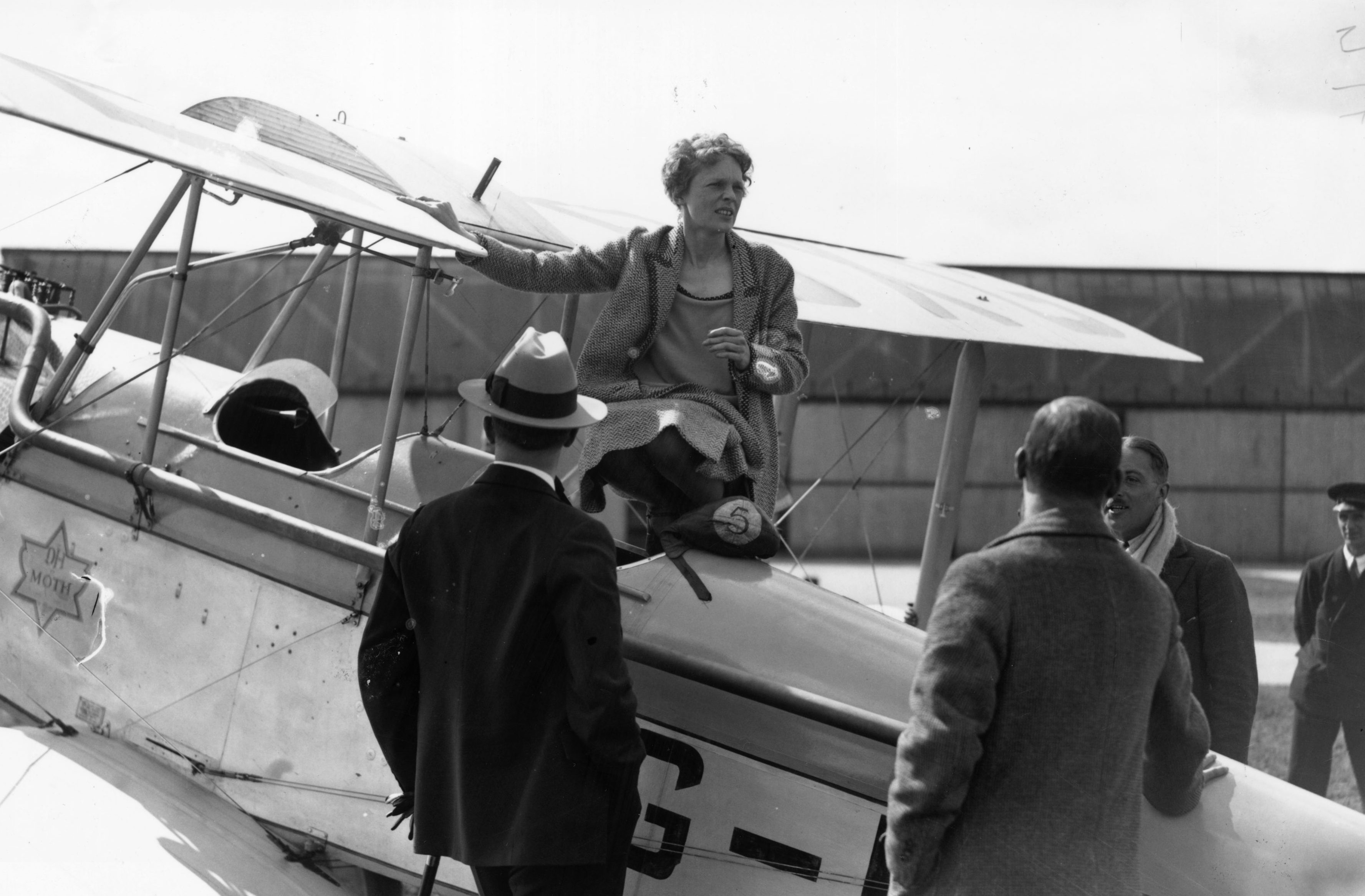
Getty ImagesAmelia Earhart & George Putnam
Putnam, in addition to being a talented and successful publisher, became an elite, driven agent and promoter. He famously partnered with Charles Lindbergh and worked with him extensively on the publication of Lindbergh’s autobiography, We, which was a massive success. Over 600,000 copies of We were sold during its first year of publication, a record-breaking achievement. Book sales reached over $250,000, the equivalent of over $2 million today. Putnam became fascinated with not only Lindbergh, but with the field of aviation.
Through a mutual friend, Putnam was introduced to Earhart, a young, ferocious female aviator who was a pioneer in the field. At first, their relationship was strictly professional, albeit friendly. Earhart, who was a staunch feminist before the term was even part of the common vernacular, was not looking for a man to depend on, and was interested in building her own career, standing on her own two feet and pursuing nothing short of excellence. Putnam, hugely impressed by Earhart, soon became her promoter and agent, and she became his protege. Putnam began calling Earhart “Lady Lindy” because she reminded him of Charles Lindbergh. Earhart, reportedly, was not a fan of the monicker. Postal Museum has more information on the courtship between Putnam and Earhart.
After several years, Putnam and Earhart’s relationship did become romantic, but for Putnam, it was not easy to win Earhart over.
4. Putnam And Earhart Signed a Prenuptial Agreement Before They Wed, In Which They Agreed to Have an “Open” Marriage, Virtually Unheard of at The Time
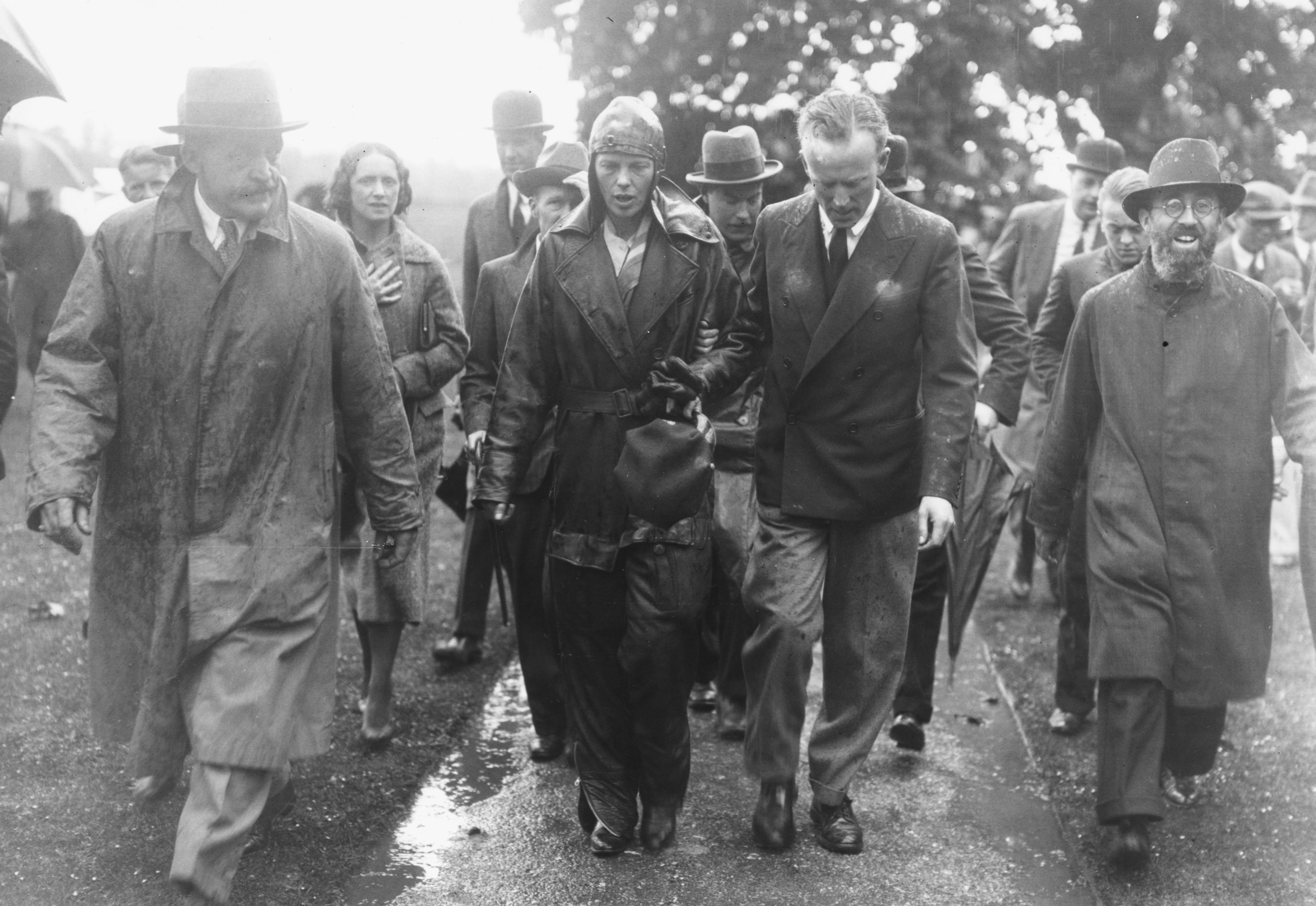
Getty ImagesAmelia Earhart & George Putnam
Putnam proposed to Earhart multiple times and was rejected before she eventually agreed to marry him, but only under the condition that they sign a prenuptial agreement. The prenup was drawn up at Earhart’s insistence, virtually unheard of and borderline scandalous at the time. Further, the marriage was largely considered a secret, as Connecticut Magazine explains.
Earhart told Putnam that she was hesitant to marry him because of the risk that a troubled marriage might negatively affect the thing that mattered most to her; her work and her career. She also indicated that she had no expectation of monogamy on Putnam’s behalf, and requested that he extend the same freedom to her, as The Huffington Post reports.
Earhart’s wishes, expressed in a letter to Putnam, are as follows:
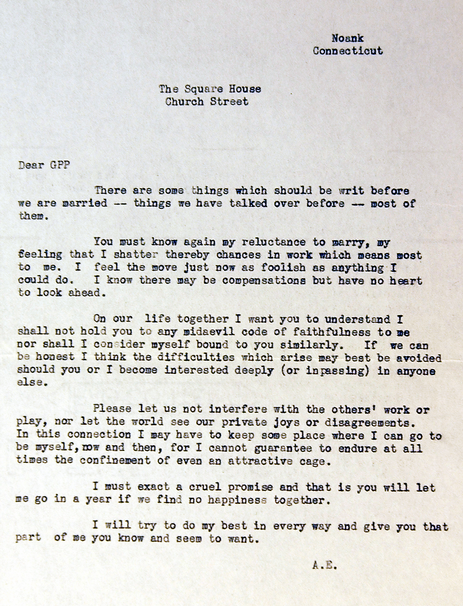
Purdue – http://earchives.lib.purdue.edu/cdm/search/collection/earhart!epurdueEarhart’s prenup letter
Women’s eNews analyzes Earhart’s letter as follows:
She was 32 and never married; he was a decade older and just divorced. She was the most famous female aviator in America; he was a successful publisher (Charles Lindbergh was one of his authors), explorer and writer. The civil ceremony, in his mother’s house on the Connecticut shore, took five minutes and, the newspapers noted, omitted the bride’s promise to “obey her husband.”
The two had met in 1928, when George Putnam chose Amelia Earhart as the first woman to cross the Atlantic in an airplane–as a passenger. Earhart had been “pushing the envelope” for women for several years, promoting female pilots, and she did the same in her marriage. Before the wedding ceremony, Earhart gave Palmer a letter containing “things which should be writ before we are married.”
“You must know again my reluctancy to marry,” it said, “my feeling that I shatter thereby chances in work which means so much to me . . . In our life together, I shall not hold you to a medieval code of faithfulness to me, nor shall I consider myself bound to you similarly . . . I may have to keep some place where I can go to be myself now and then, for I cannot guarantee to endure at all times the confinements of even an attractive cage. I must extract a cruel promise, and that is you will let me go in a year if we find no happiness together.”
The partnership flourished. A year later, Earhart made her historic solo crossing of the Atlantic. Putnam brilliantly organized her public appearances and managed her skyrocketing fame, including her endorsement of a line of flight luggage bearing her name and her creation of a flying suit–with loose trousers, a zipper top and deep pockets–featured in Vogue magazine.
5. Putnam Was Inundated With Messages From Purported Psychics Following Earhart’s Death, And Admitted Believing That Earhart May Have Had Psychic Abilities Herself
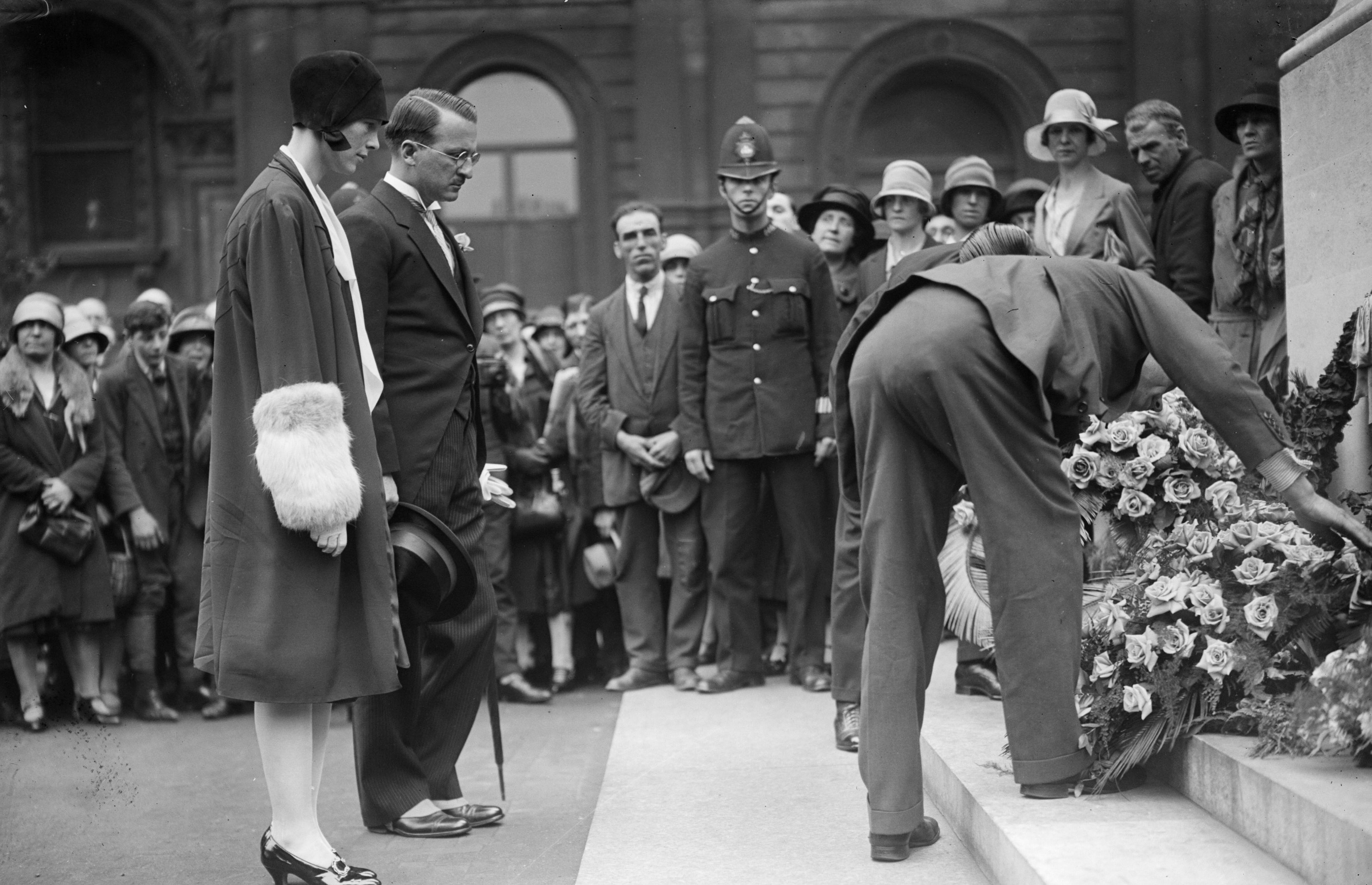
Getty ImagesAmelia Earhart & George Putnam
Putnam was understandably devastated after Earhart’s plane disappeared over the Pacific while en route to Papua New Guinea in 1937. Putnam was inundated with messages from psychics claiming to have information about Earhart’s condition and whereabouts, many alleging that the pilot was still alive. Interestingly, it was rumored that Earhart herself may have harbored some psychic abilities, claims which were reportedly acknowledged by Putnam himself.
The theories of the psychic phenomena related to Earhart’s disappearance and death are outlined by the website Earhart Truth as follows:
After Earhart’s disappearance, psychics entered the picture again, via huge numbers of telegrams, letters and phone calls to G.P. Commendably, he gave impartial consideration to every communication, even occasionally spending considerable sums to follow out promising leads.
Of all the strange communications that Putnam received after his wife’s disappearance, the telegram he received on a late July morning at his Hollywood home in 1937 may have been strangest. It ran:
Amelia Earhart alive on coral shoal on one of Gilbert Islands latitude 2 above equator 174 longitude. This message received by Mr. L— New York Medium.
An hour later, Putnam received a short note from a Captain T__ M__ of Cape Breton, Nova Scotia:
. . . I am the retired captain of a copra boat that used to trade in the South Seas. I just happened to remember an uncharted island that we frequently visited for turtle eggs. The Gilbertese natives know where it is, too. The island is at—
Here Putnam stopped in surprise and called his son David to locate the telegram he had received earlier that day. A few moments later, David returned with the telegram and the two compared the position given in that document with the position given in the note from Nova Scotia. Amazingly both positions were the same.
Putnam called the captain in Nova Scotia and the medium in New York for additional details. The details seemed sufficiently promising that the publisher immediately left for New York City, where two days later, he was able to arrange a check of the island by British authorities. A ship dispatched from Makin Island a short while later steamed for the location given in the two communications to Putnam.
But eerily, there was no island at the given location. This baffled Captain M— and his former crew members, who all swore they had visited the island a half-a-dozen times. The only explanation that could be put forth was that the island had suddenly been sunk by volcanic activity. G.P. spent $1,000 on that adventure.
In September 1937, Putnam was contacted by a friend who was prominent in literary circles, and who was a serious student of psychic matters. Putnam considered his friend of unimpeachable character and integrity. His friend told him that he had encountered a medium of amazing ability, whose performance was yet to be explained. According to Putnam’s friend, the medium in question was a woman who had two voices, her own and another, which came from someplace in her chest.
“Ventriloquism, perhaps?” Putnam interjected.
“No — I’ve already eliminated that possibility. The point is, George, she gave me a brief message from AE the other night.”
There was a moment of surprised silence.
“Oh . . . ” GP said.
“And there may be more. I just thought you’d like to sit in for a demonstration.”
“Of course,” GP agreed, and a date was set for the next night at 7:30 p.m.
The next night the medium appeared at the home of Putnam’s author friend in Los Angeles. Before the séance started, the woman was thoroughly examined for items hidden on her person and mouth taped shut. Untypical of such events, the lights were all kept on, with all participants crowding close to the medium. After just a few moments, a strange voice, like a soft whisper, erupted from the woman, although there wasn’t a sign of motion in the muscles of her throat or chest.
The following is the portion of the transcript of the séance which Putnam had recorded, including some of his responses, in parentheses) to specific statements the medium.
Voice: Fred was not at fault. It was unavoidable.
Putnam: Were they killed instantly?
Voice: No, on a reef…
Putnam: What direction from Howland?
Voice: Almost directly north. (There are no islands north of Howland.)
Putnam: Is it Kingman Reef?
Voice: Near there. There are Navy planes flying near there now. (This is November. The Navy search ended in July.)
Putnam: What will they find?
Voice: They will find wreckage, in the water near the island. (Nothing was ever found.) Putnam: What did Fred Noonan call his wife?
Voice: Fred want you to tell B. that it was not his fault… He is living. (Evasive answer)
Putnam: Who is living? Noonan?
Voice: He is not dead. He wanted you to know there is no death… Maitland. He is here.
Putnam: Is Kingford-Smith there?
Voice: Yes. Maitland and Kingsford-Smith.
Putnam: Wiley Post? And Will Rogers?
Voice: Yes. Yes. Amelia is among a lot of friends.
Putnam: What about her mother?
Voice: She has not given up hope. (That was true.)
Putnam: Can you ascertain from Amelia what word she used in addressing me? Does the name begin in with the letter “K”?
Voice: No, “P”.
Putnam: This is important; I want to get this right.
Voice: Pug, Pug or Pugsy. (AE actually gave me a nickname similar to this, although only one or two intimate friends knew it.)
Putnam: What was it Amelia always carried with her that she didn’t take this time and left it with me?
Voice: Her bracelet. (This is true. No one knew but myself.)
Putnam: What country did the bracelet come from?
Voice: Africa. (Only AE and I knew that.)
Putnam: What would she like me to do with the bracelet?
Voice: Keep it. You gave it to her, so you keep it.
Putnam: Will any of Amelia’s things, like her watch, ever be found?
Voice: No. Parts of the plane.
Putnam: Will you ask Amelia, please, if she had the Seagraves watch.
Voice: She did not. (Wrong. She did have it.)
Putnam: Where is her will?
Voice: In the safe-deposit box. With the watch. (Wrong).
Putnam: Ask Amelia if she knows about the trip I am contemplating. [In December 1937, Putnam left on a trip aboard the yacht Athene, owned by film producer Tay Garnett.]
Voice: Yes. That is very good. By all means go. (I was planning a cruise. I did go later.)
Abruptly, the séance ended, and George Putnam went home, puzzled by the experience. He was never able to explain the correct information presented by the medium. Had the medium merely read Putnam’s mind, or had she really relayed messages to the publisher from his deceased wife?
Most dismiss the idea of Earhart having any sort of psychic connection with the so-called mediums who contacted Putnam as utter nonsense. Many believe that the so-called psychics are merely opportunists capitalizing on the tragic death of Earhart and Putnam’s subsequent heartbreak.
However, according to news reports published just today, there may have been some accuracy to the reports of the psychics. According to experts, bones which are believed to be Earhart’s have been discovered on a remote island in the Pacific, possibly providing some answers to a mystery that has captivated the world for over 80 years.
For more information on Earhart’s reported interest in extrasensory perception and her relationship with Putnam, check out this article published by The New York Times.